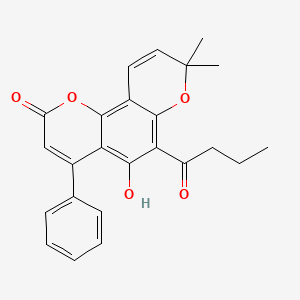
|
6-Butyryl-5-hydroxy-4-phenylseselin |
6-Butyryl-5-hydroxy-4-phenylseselin is a lipid of Polyketides (PK) class. |
1 |
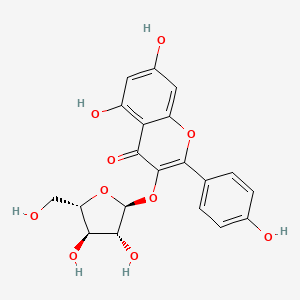
|
Juglanin |
Juglanin is a lipid of Polyketides (PK) class. |
18 |
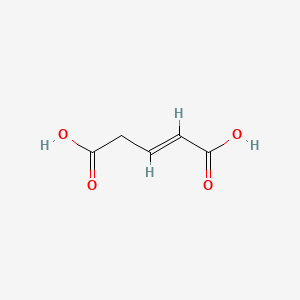
|
Glutaconic acid |
Glutaconic acid is a lipid of Fatty Acyls (FA) class. The involved functions are known as Fermentation and Saturated. |
31 |
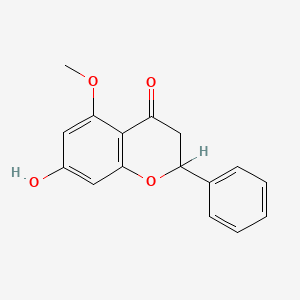
|
Alpinetin |
Alpinetin is a lipid of Polyketides (PK) class. |
72 |
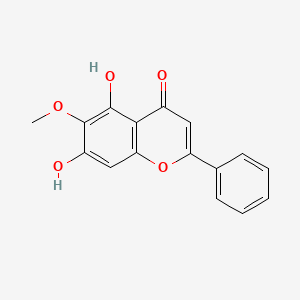
|
Oroxylin A |
Oroxylin A is a lipid of Polyketides (PK) class. |
180 |
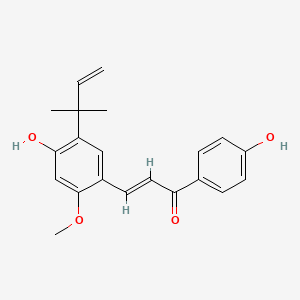
|
licochalcone a |
licochalcone a is a lipid of Polyketides (PK) class. Licochalcone a is associated with abnormalities such as CLEFT LIP, CONGENITAL HEALED, Gastric ulcer, Keratoconjunctivitis Sicca, Inflammatory disorder and Leishmaniasis. The involved functions are known as 5-(carboxyamino)imidazole ribonucleotide mutase activity, Germination, Cell Growth, Metabolic Inhibition and Respiratory Chain. Licochalcone a often locates in Cell surface, Plasma membrane, IkappaB kinase complex, Mitochondria and Membrane. The associated genes with licochalcone a are HM13 gene, Salmine, cytochrome c'', TNFRSF1A gene and RIPK1 gene. The related lipids are Promega. |
220 |
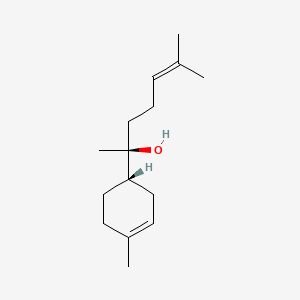
|
Levomenol |
Levomenol is a lipid of Prenol Lipids (PR) class. |
241 |
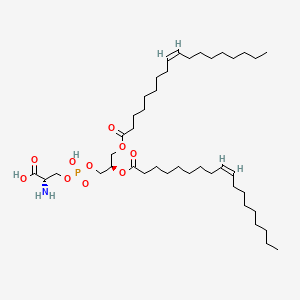
|
1,2-Dioleoylphosphatidylserine |
1,2-Dioleoylphosphatidylserine is a lipid of Glycerophospholipids (GP) class. The involved functions are known as Process, Membrane Potentials and deprotonation. 1,2-dioleoylphosphatidylserine often locates in I band. The associated genes with 1,2-Dioleoylphosphatidylserine are SCTR gene. The related lipids are 1,2-oleoylphosphatidylcholine, DOPE and 1,2-distearoylphosphatidylethanolamine. |
259 |
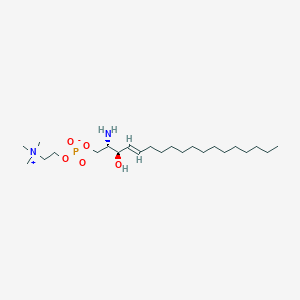
|
sphingosylphosphorylcholine |
sphingosylphosphorylcholine is a lipid of Sphingolipids (SP) class. Sphingosylphosphorylcholine is associated with abnormalities such as Cerebral Vasospasm, Subarachnoid Hemorrhage, Atherosclerosis, Hypertensive disease and Niemann-Pick Diseases. The involved functions are known as MAP kinase kinase activity, JUN kinase activity, Phosphorylation, biphenyl synthase activity and Cell Death. Sphingosylphosphorylcholine often locates in Adipose tissue, Protoplasm, Body tissue, Membrane and Extracellular. The associated genes with sphingosylphosphorylcholine are UCN3 gene, MAPK9 gene, JUN gene, NAA50 gene and P4HTM gene. The related lipids are Lysophospholipids, lysophosphatidic acid, Lysophosphatidylcholines, Sphingolipids and Saponin. The related experimental models are Mouse Model. |
265 |

|
(-)-Perillyl alcohol |
(-)-perillyl alcohol is a lipid of Prenol Lipids (PR) class. The involved functions are known as Cell Cycle Progression, Cell Cycle, Cell Proliferation, Apoptosis and Isoprenylation. (-)-perillyl alcohol often locates in Cytoplasm, Membrane and Plasma membrane. The associated genes with (-)-Perillyl alcohol are JUN gene, Candidate Disease Gene, IL24 gene, BCL2L1 gene and CFB gene. The related experimental models are Transgenic Model. |
299 |
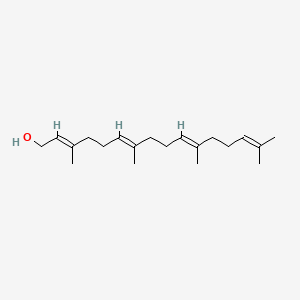
|
Geranylgeraniol |
Geranylgeraniol is a lipid of Prenol Lipids (PR) class. Geranylgeraniol is associated with abnormalities such as abnormal fragmented structure, Hyperostosis, Diffuse Idiopathic Skeletal and Tuberculosis. The involved functions are known as Positive Regulation of Apoptosis, Anabolism, Prenylation, Apoptosis and pathologic cytolysis. Geranylgeraniol often locates in Body tissue, Cytoplasmic matrix, Red Cell Ghost, Spindle and Nuclear lamin. The associated genes with Geranylgeraniol are MST1 gene, STN gene, UMOD gene, ABCA1 gene and RHOA gene. The related lipids are Sterols, Hydroxycholesterols, SK&F 104976 and 25-hydroxycholesterol. |
403 |
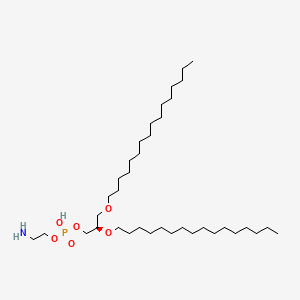
|
61423-61-8 |
61423-61-8 is a lipid of Glycerophospholipids (GP) class. 61423-61-8 is associated with abnormalities such as Superficial ulcer, Spastic syndrome, Morphologically altered structure, Dysentery, Shigella dysenteriae and Cholera. The involved functions are known as Force, vesicle fusion, Physiologic Organization, Drug Interactions and Pressure- physical agent. 61423-61-8 often locates in biological membrane, Tissue membrane, Head, Membrane and Cell membrane. The associated genes with 61423-61-8 are ATR gene, glycyl-glycyl-glycine, Protein Structure, Polypeptides and MCC gene. The related lipids are 1,2-oleoylphosphatidylcholine, proteoliposomes, Sphingolipids, Sterols and DOPE. |
457 |
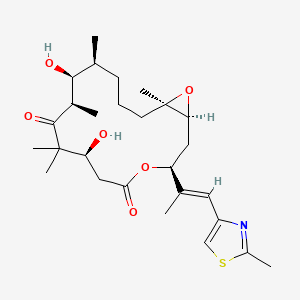
|
Epothilone B |
Epothilone B is a lipid of Polyketides (PK) class. Epothilone b is associated with abnormalities such as Myelosuppression, Measurable Disease, Neuropathy, Neutropenia and Thrombocytopenia. The involved functions are known as Cell Cycle Arrest, Apoptosis, Signal Transduction, Cytokinesis and Caspase Activation. Epothilone b often locates in Mitochondria, Cytoplasmic matrix, Microtubules, Spindle and Protoplasm. The associated genes with Epothilone B are TNFSF10 gene, DIABLO gene, FADD gene, BCL2 gene and BCL2L1 gene. The related lipids are Promega and Phosphatidylserines. The related experimental models are Xenograft Model and Mouse Model. |
492 |
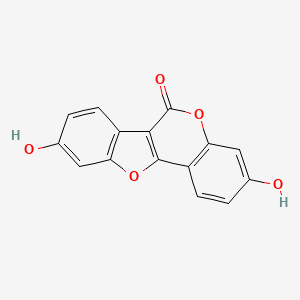
|
COUMESTROL |
COUMESTROL is a lipid of Polyketides (PK) class. Coumestrol is associated with abnormalities such as Infertility, Renal tubular disorder, Osteoporosis, Postmenopausal, Nodule and Central precocious puberty. The involved functions are known as Process, antagonists, Accident due to exposure to weather conditions, physiological aspects and Cell Proliferation. Coumestrol often locates in Blood, Body tissue, Reproductive system, Membrane and Myometrial. The associated genes with COUMESTROL are GAPDH gene, PPID gene, pyridinoline, NODAL gene and Nitrogen fixation gene. The related lipids are enterodiol. The related experimental models are Mouse Model. |
638 |

|
PE(15:0/20:0) |
PE(15:0/20:0) is a lipid of Glycerophospholipids (GP) class. Pe(15:0/20:0) is associated with abnormalities such as Exanthema, Infection, Painful Bladder Syndrome, Obesity and Fatty Liver. The involved functions are known as conjugation, Transcription, Genetic, Sinking, Autophagy and Protein Biosynthesis. Pe(15:0/20:0) often locates in membrane fraction, soluble, Membrane, Body tissue and Tissue membrane. The associated genes with PE(15:0/20:0) are GABARAPL2 gene, ATG10 gene, ATG12 gene, SLC33A1 gene and GABARAP gene. The related lipids are Liposomes, Lipopolysaccharides, Phosphatidylserines, Membrane Lipids and Cardiolipins. The related experimental models are Knock-out and Cancer Model. |
723 |

|
Wogonin |
Wogonin is a lipid of Polyketides (PK) class. Wogonin is associated with abnormalities such as Hyperlipidemia, Atherosclerosis, Inflammatory disorder, Dermatitis, Atopic and Ischemia. The involved functions are known as Inflammation, Regulation, luciferase activity, store-operated calcium entry and Transcriptional Activation. Wogonin often locates in Cytoplasmic matrix, Pore, Membrane, Protoplasm and Mitochondria. The associated genes with Wogonin are SGK1 gene, ORAI1 gene, STIM1 gene, P4HTM gene and BCL2 gene. |
732 |
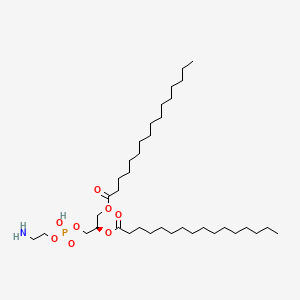
|
923-61-5 |
923-61-5 is a lipid of Glycerophospholipids (GP) class. 923-61-5 is associated with abnormalities such as Gigantism, Hyperostosis of skull, BOSLEY-SALIH-ALORAINY SYNDROME, Anemia, Sickle Cell and Amyloidosis. The involved functions are known as Protein Binding, Anabolism, Signal Transduction, Detergents and Genetic Translation Process. 923-61-5 often locates in soluble, Tissue membrane, brush border membrane, Mouse Kidney and Plasma membrane. The associated genes with 923-61-5 are THEMIS gene, SLC33A1 gene, P4HTM gene, Integral Membrane Proteins and Protein Structure. The related lipids are 1,2-oleoylphosphatidylcholine, Unilamellar Vesicles, Membrane Lipids, DOPE and Micelles. |
755 |
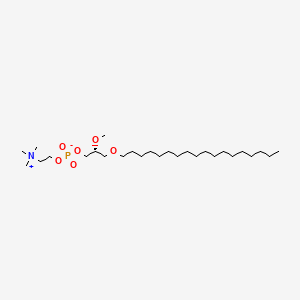
|
ET-18-OCH3 |
ET-18-OCH3 is a lipid of Glycerophospholipids (GP) class. Et-18-och3 is associated with abnormalities such as Morphologically altered structure, Choline Deficiency, Acquired partial lipodystrophy and Punctate inner choroidopathy. The involved functions are known as Mutation, establishment and maintenance of localization, Uptake, Increased Sensitivy and Process. Et-18-och3 often locates in Plasma membrane, Membrane, Back, Protoplasm and Endoplasmic Reticulum. The associated genes with ET-18-OCH3 are Genome, Alleles, ATP8A1 gene, Homologous Gene and ATPase Gene. The related lipids are Phosphatidylserines, Sphingolipids, Lysophosphatidylcholines, Phospholipid Ethers and Phosphatidate. The related experimental models are Knock-out. |
794 |

|
lysophosphatidic acid |
lysophosphatidic acid is a lipid of Glycerophospholipids (GP) class. Lysophosphatidic acid is associated with abnormalities such as Atherosclerosis, Alzheimer's Disease, Asthma, Diabetes Mellitus, Non-Insulin-Dependent and Septicemia. The involved functions are known as Inflammation, Chemotaxis, Binding (Molecular Function), Polymerization and Inflammatory Response. Lysophosphatidic acid often locates in Cytoskeleton, Microfilaments, actin cytoskeleton, Extracellular and Structure of germinal center of lymph node. The associated genes with lysophosphatidic acid are TNF gene, MAPK3 gene, RHOA gene, CDC42 gene and ADRBK1 gene. The related lipids are lysophosphatidic acid, Lipopolysaccharides, Lysophosphatidylcholines, Lysophospholipids and Phosphatidic Acid. The related experimental models are Knock-out, Transgenic Model, Rodent Model and Disease model. |
820 |
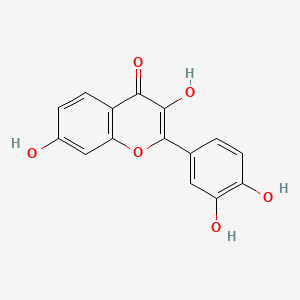
|
Fisetin |
Fisetin is a lipid of Polyketides (PK) class. Fisetin is associated with abnormalities such as Morphologically altered structure, PARKINSON DISEASE, LATE-ONSET, Tetanus, CNS disorder and Disintegration (morphologic abnormality). The involved functions are known as Autophagy, Apoptosis, Energy Metabolism, Acceleration and Anabolism. Fisetin often locates in Mitochondria, Cytoplasmic matrix, Extracellular, Cytoskeletal Filaments and Autophagic vacuole. The associated genes with Fisetin are SIRT1 gene, MAP1LC3A gene, TP53 gene, P4HTM gene and AURKB gene. The related lipids are Phosphatidylserines and Lipopolysaccharides. The related experimental models are Animal Cancer Model, Xenograft Model, Mouse Model, Cancer Model and Disease model. |
832 |



















